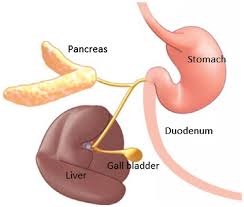The American Animal Hospital Association recommends blood tests as part of an annual well pet examination. These tests include a biochemical profile, evaluating your pet’s kidneys, blood sugar, blood protein levels, and electrolytes such as calcium, potassium, sodium and chloride. The panel also always includes multiple tests of liver health, which I will be discussing in today’s blogpost.
Veterinary Liver Tests Explained
A typical biochemical profile will contain multiple liver tests. The most common ones measure enzymes that leak out of damaged liver cells: ALT, AST, GGT and ALP (sometimes called SAP). These are the acronyms, respectively, for alanine aminotransferase, aspartate transferase, gamma glutamyl transferase, and alkaline phosphatase. Now you get why we just use acronyms. Elevated levels of any of these enzymes can indicate a liver problem such as inflammation of the liver which is called hepatitis. Alternatively, the liver might be injured due to a systemic illness like leptospirosis, diabetes or a liver tumor.
A bilirubin test is a different type of test than ALT, AST, GGT and ALP. Elevated levels of bilirubin causes jaundice, the yellow tinged skin common in liver disease. However, not all elevations of bilirubin mean liver disease. Elevated bilirubin prompts a veterinarian to consider three broad diagnostic categories: increased breakdown of red blood cells (which generates bilirubin), liver disease and blockage of the bile duct. Normally, bilirubin is stored in the gallbladder and excreted in the intestinal tract. If the bile duct is blocked off, bilirubin backs up into the bloodstream. This backup causes elevations in bilirubin and jaundice.
Common Causes of Elevated Liver Tests in Dogs
In healthy dogs, an elevation of liver biomarkers may not be concerning if the elevation is mild and might simply require a follow-up blood test to show the elevation has resolved. Drugs, especially steroids and some antiseizure medications like phenobarbital, frequently increase liver test results. Cushing’s disease is well known to increase the ALP as a result of the increase in endogenous steroid production. Liver shunts and toxins, such as aflatoxin or xylitol, cause elevations in liver biomarkers. Finally, the most common form of canine liver cancer, hepatocellular carcinoma, can produce elevated liver test results; however, this cancer is uncommon, occurring in about 1% of dogs. In some dogs, an elevated ALT might suggest a problem with copper metabolism.
Common Causes of Elevated Liver Tests in Cats
Hyperthyroidism is the most common hormone disorder seen in cats. The increased activity of the thyroid upregulates metabolism, and the ALT commonly increases. Hepatic lipidosis – accumulation of fat in the liver of a cat – is another cause of elevated liver tests in cats. If I see a young cat with elevated liver biomarkers, I would consider feline infectious peritonitis as a possible cause.
The unique anatomy of the feline liver, pancreas, small intestine (duodenum) and their connective ducts make them prone to simultaneous inflammation. This condition is called triaditis, and it is another cause of elevated liver test results. The anatomic image from CriticalCareDVM.com helps illustrate this interconnection.
Like in dogs, a liver tumor can increase the liver biomarkers in cats. The most common type of liver tumor in cats is the benign cystadenoma. However, lymphoma also frequently infiltrates the liver.
Don’t Forget Your Annual Well Pet Visit
Elevated liver test results can be unnerving for pet owners due to the myriad possible underlying causes. Your veterinarian will know the best next steps for your particular pet, so be patient because working through this lengthy list will take some time. And don’t forget to schedule your annual well pet exam because catching these conditions early will give your pet the best chance at recovery.

